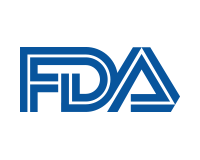United States Department of Health and Human Services

United States Food and Drug Administration: Publications
Date of this Version
2019
Document Type
Article
Citation
Appetite 133 (2019) 191–198
https://doi.org/10.1016/j.appet.2018.10.033
Abstract
The Healthy, Hunger-Free Kids Act of 2010 requires schools participating in the National School Lunch Program (NSLP) to offer a variety of healthy food options each day. Using digital photography data collected from two suburban elementary schools in the spring of 2013, we examine NSLP participant's selection and consumption of all five NSLP lunch components ((1) milk, (2) vegetable, (3) fruit, (4) meat/meat alternate (MA), and (5) grain). We use logit regressions to analyze the selection of the various lunch components by race/ethnicity, gender, grade, and household income level. In addition, ordinary least squares regressions are used to analyze the se- lection and consumption of calories contained in the chosen lunch and by lunch component. Selection and consumption varied by race, ethnicity, gender, and eligibility for free or reduced-price lunch. For example, black students consumed fewer calories than white students, black and Hispanic students consumed fewer calories from milk than white students, and free and reduced-price lunch eligible students consumed more calories from milk and fewer calories from grains. Using National Health and Nutrition Examination Survey (NHANES) data, we determine that school lunches are an important part of school-day food intake for NSLP participants. These results provide guidance for making changes within a cafeteria's offerings to increase the selection of healthy foods.
Included in
Dietetics and Clinical Nutrition Commons, Health and Medical Administration Commons, Health Services Administration Commons, Pharmaceutical Preparations Commons, Pharmacy Administration, Policy and Regulation Commons


Comments
U.S. government works are not subject to copyright.